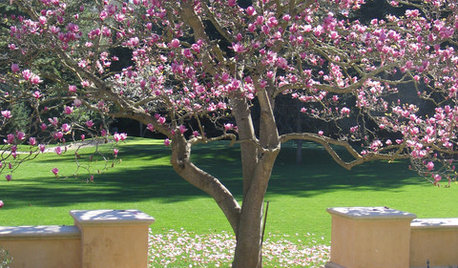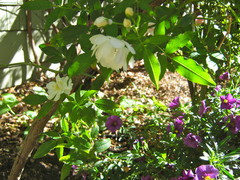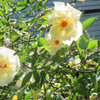Heritage Rose symposium in Pasadena
jacqueline9CA
7 years ago
Featured Answer
Sort by:Oldest
Comments (22)
Sheila z8a Rogue Valley OR
7 years agomcnastarana
7 years agoRelated Discussions
2013 Wyck Old Rose Symposium, 5/18/2013
Comments (4)This was going to be the year that I finally could make the trek to Wyck to see the place and attend the Symposium ... but it's the same day as the Rose Day at Monticello's Tufton Farm, and I'm committed to being there to help with that. One day I'll get to Wyck. In the meantime, I'll drown my sorrows in the Leonie Bell Noisette Garden at Tufton ... :)...See MoreMark your calendar - Sacramento Symposium, Oct 12-14, 2012
Comments (25)For those of us who cannot attend, are there any plans to publish all or part of the proceedings? I bought the book form of the 9th International Heritage Rose Conference Proceedings in Charleston in 2001 for a very reasonable price. It has given me many hours of enjoyable reading. Maybe if you did a survey to see if there might be enough interest to make the project viable?...See MoreOld Rose Symposium at Wyck in Philadelphia May 30
Comments (2)Diane-----thanks for this information---finally something interesting within driving distance---- I'm still having trouble walking ----If only I could trust my legs I would love to go to this. It sounds so wonderful Florence...See MoreSacramento Symposium ... Who Else Will Be There?
Comments (14)I'm traveling by myself. I usually do when I go to things like this. It leaves my husband home to take care of the many things that go on around here every day, and frees me to just 'leave' when the time comes to head to the airport. I'm comfortable traveling alone, and I'm only gone for a few days at a time. Pamela, visiting your garden would be wonderful. If it doesn't happen during this trip, there will definitely be others. The San Jose Heritage sounds like a must do. Honestly, I am most looking forward to making in-person acquaintances with so many of the folks that I chat with here and on FB. If I stayed an extra day or two, and spent the whole time talking roses and drinking coffee, I would be happy. Connie...See MoreCori Ann - H0uzz violated my privacy
7 years agojacqueline9CA
7 years agojacqueline9CA
7 years agomalcolm_manners
7 years agojacqueline9CA
7 years agonikthegreek
7 years agomalcolm_manners
7 years agojacqueline9CA
7 years agomalcolm_manners
7 years agojacqueline9CA
7 years agojacqueline9CA
7 years agoDara McKay
7 years agocemeteryroseanita
7 years agomalcolm_manners
7 years agoRosefolly
7 years agoDara McKay
7 years agoAnita Clevenger
7 years agoroseseek
7 years agojacqueline9CA
7 years ago
Related Stories

HOUZZ TOURSMy Houzz: Spanish Colonial Restoration in Hollywood
Honoring its Spanish heritage, a 1928 home in California becomes a romantic sanctuary and inviting space for entertaining
Full Story
LIFE10 Ways to Honor and Remember a Departed Loved One at Home
Help the grieving process and keep beautiful memories alive with these thoughtful tributes
Full Story
SMALL HOMESHouzz Tour: A Beach Cottage Gets Its Vibe Back
Historically accurate details restore the 1940s charm of a Laguna Beach home
Full Story
MY HOUZZMy Houzz: Global-Inspired Color Transforms a Lavish Beach Home
See how a Southern California designer breathes enchantment, color and texture into her family’s coastal home
Full Story
CRAFTSMAN DESIGNHouzz Tour: Bridging Past and Present in a California Craftsman
A Santa Monica bungalow says goodbye to gloominess and hello to a bright new look that mixes modern and traditional
Full Story







cemeteryroseanita